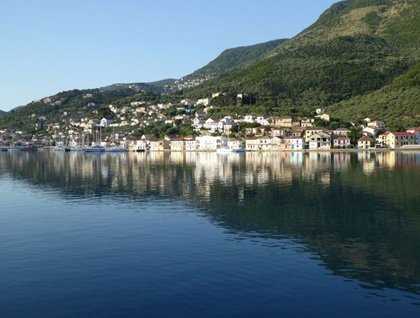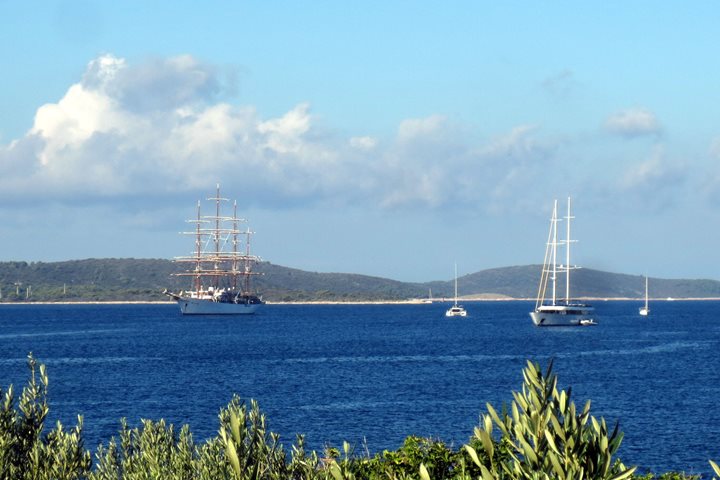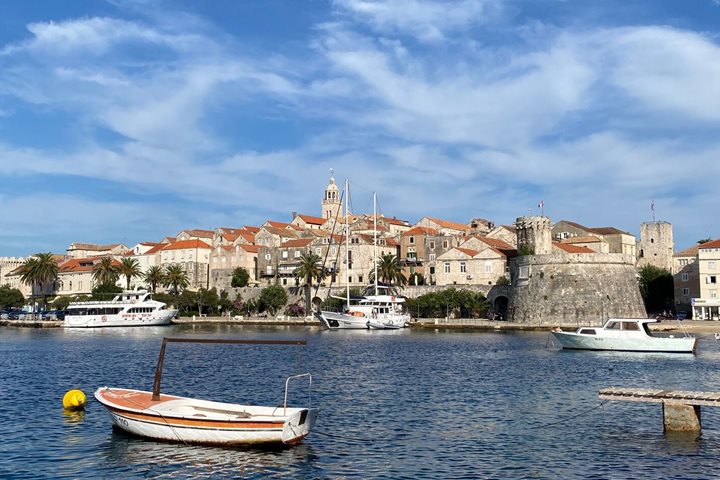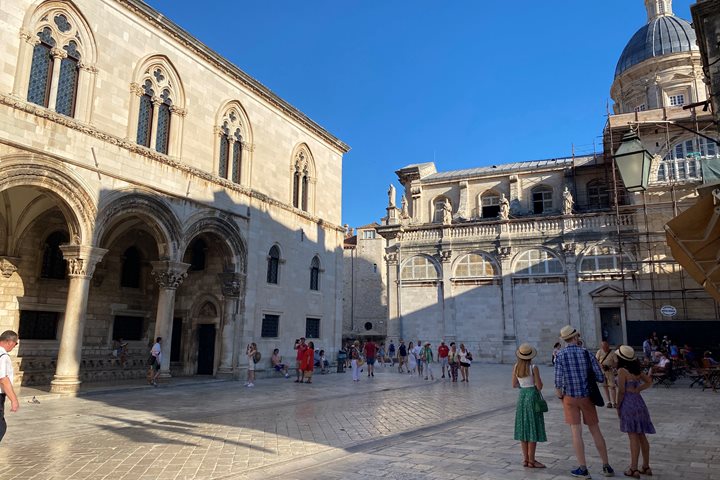Ithaca, Greece
The sun had not yet risen above the craggy, cypress encrusted hills of Ithaca, when the Sea Cloud slipped noiselessly into the harbor of Vathy, the main port of the island. The reflection of the pastel colored neo-classical houses that ringed the port shimmered like a soft iridescence across the mirror-calm waters of the bay. As the tenders ferried us ashore, we witnessed the village come awake as the shopkeepers laid out their wares and locals claimed their favorite chairs in the tavernas for their morning coffees.
Ithaca is the home of Odysseus, Homer’s legendary hero of the Iliad and the Odyssey. Odysseus described his island kingdom as “a rough land, but a fit nurse of men….”. Indeed, this mountainous island is divided almost in two save a narrow promontory and punctuated by deep bays of crystal clear waters. The exposed eastern coast is cloaked in dense maquis, while the steep slopes of the north and eastern sections of Ithaca are festooned with olive trees and tall Italian cypresses.
Our morning destination was the hilltop village of Stavros on the northern tip of the island—but the bus trip there was not for the faint of heart. The narrow road that snaked its way ever higher up the slopes of the eastern shore of the island provided spectacular views of the Gulf of Molos and the Sea Cloud at anchor in the almost closed bay in front of Vathy.
Our first stop was a small, now deserted monastery where our wonderful guides introduced us to the art of Byzantine icons and the Orthodox religion. The base of the nearby bell tower, seemingly situated at the highest point of the Ithaca, provided some of the best views of the eastern shore and distant Ionian islands.
Our next stop was an Orthodox church in a tiny village that was decorated from floor to ceiling in late medieval frescos of eastern Christian saints. As we arrived in Stavros, Nena and Sophia pointed out the main square overlooking Afales Bay where the townspeople had placed a bronze statue of King Odysseus, a model of his palace, based on the Mycenaean palace of Nestor, and a topographical map of Homer’s hero’s 20-year epic voyage. Stavros held many other delights, not the least of which was cafe freddos, ice cream, and mouth-watering baklava. Our return route took us down a marginally less twisty, yet no less dramatic road high above the western shore of the island.
During lunch, Captain Pushkarev, chased down a ripple of wind he sighted off the southeast coast, and soon the crew was ordered aloft to set as much canvas as possible to take advantage of every breath of air. While we thought the slight breeze would present an opportunity to lower our Zodiacs to allow for a photo-safari around the ship—in the blink of an eye, it turned into a really strong wind sending the ship flying along at 8-knots on a starboard tack. No Zodiac safari today, but with the wind and sun on our faces, we braced our feet against the steep heel of the ship and just enjoyed an afternoon of truly spectacular sailing!







